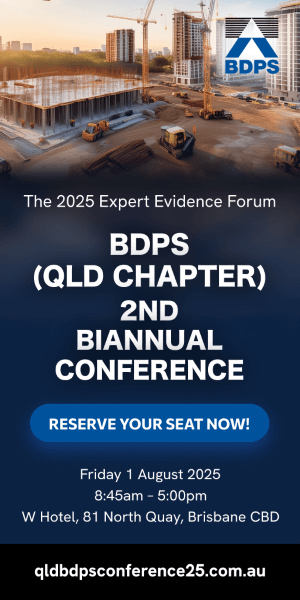What is the urgent relief which is sought?
The starting point for any proposed urgent application is to identify the relief which is to be sought from the court.
By doing this, you will identify whether the Federal Court has jurisdiction (if proceedings have not yet commenced) and whether the evidence which you have available will enable your client to obtain the relief on an urgent basis.
Does a practice note apply?
The Central Practice Note1 is the core practice note for court users. All other practice notes are to be read within the framework established in the Central Practice Note. If you intend to bring proceedings in the Federal Court on behalf of your client, you must read it.
The Central Practice Note provides that the work of the Federal Court is broadly divided into nine national practice areas or NPAs, some of which have sub-areas. The nine NPAs are:
- Administrative and Constitutional Law and Human Rights
- Admiralty and Maritime
- Commercial and Corporations
- Federal Crime and Related Proceedings
- Employment and Industrial Relations
- Intellectual Property
- Native Title
- Taxation
- Other Federal Jurisdiction. This covers cases which fall outside the scope of the other NPAs such as defamation.
Once you have identified the relief which your client proposes to seek on an urgent basis, you should also consider whether the proceeding will fall within the scope of one of the NPAs and then review the specific practice note which has been issued in relation to that NPA, if any.
This is because there may be particular procedures within the practice note for the NPA to which you need to have regard for the purposes of seeking urgent relief. The practice notes are available on the Federal Court website.
If proceedings have not been commenced
The following is subject to any specific requirements of a practice note relating to a NPA.
Rule 7.01 Federal Court Rules (FCR) enables an application to be brought if the applicant intends to start a proceeding in the Federal Court, the matter is urgent and the order sought is the grant of an injunction or other types of orders which are identified, such as the appointment of a receiver. It would also include a freezing order2 and a search order.3 The rule enables an applicant to apply without notice.
The form of application to use is Form 12 and it must be accompanied by an affidavit (in Form 59) stating the facts on which the prospective applicant relies.4 The application requires that the orders sought be identified by reference to rule 7.01(1) FCR and that an undertaking be given by the applicant to start a proceeding in relation to the subject matter of the application within 14 days after the application has been determined.5
Alternatively, an originating application may be filed which seeks both final and interim relief (in Form 15). As to this, you should have regard to section 5 of the Central Practice Note, which identifies the procedures for urgent originating applications as set out below.6
Commercial and Corporations
Urgent originating applications will be dealt with by dedicated Commercial and Corporations duty judges: see the Commercial and Corporations Practice Note (C&C-1).7
The first step is to go to the Federal Court website at fedcourt.gov.au/contact/urgent-duty-contact. That page will identify the duty judge contacts and telephone numbers for urgent commercial and corporate matters. For the email details of the associates to the judges, go to fedcourt.gov.au/contact/judges-chambers.
For after-hours urgent applications in Queensland, call 0407 469 171.
Admiralty and Maritime
Urgent originating applications should be taken directly to the Admiralty and Maritime Registry coordinating judge in the relevant registry or, in his or her absence, to a judge in the NPA in the registry or to the National Operations Registrar – see the Admiralty and Maritime Practice Note (A&M-1).8
For urgent admiralty matters, go to fedcourt.gov.au/contact/urgent-admiralty for the contact details of the Admiralty & Maritime NPA Registry coordinating judge in each state who should be the first point of contact for urgent judge-related applications.
For urgent applications for the arrest of a vessel,9 practitioners should contact the duty registrar (or other nominated registrar) in the local registry where the arrest will take place. The contact details are at fedcourt.gov.au/contact/qld.
For after-hours urgent applications in Queensland, call 0407 469 171.
Other NPAs (being other than those referred to above)
Urgent originating applications should be taken directly to the general duty judge in the relevant registry. Unless otherwise indicated in individual NPA practice notes, if an urgent application is brought before the general duty judge and that judge is not a judge within the relevant NPA, the court will arrange, where appropriate, to have the application referred to a judge in that NPA.
The first step is to go to the Federal Court website at fedcourt.gov.au/contact/urgent-duty-contact. That page will identify the duty judge contacts and telephone numbers for urgent general matters. For the email details of the associates to the judges, go to fedcourt.gov.au/contact/judges-chambers.
For after-hours urgent applications in Queensland, call 0407 469 171.
If proceedings have been commenced
A party may make an oral application for an interlocutory order at a hearing.10 This would be a rare situation.
Alternatively, a party seeking an order in an existing proceeding must file an interlocutory application in the prescribed written form, being Form 35. Subject to below, the party filing the interlocutory application must serve it and any accompanying affidavit on ‘any other party’ at least three days before the date fixed for the hearing.11
However, if the circumstances are such that the applicant will suffer serious prejudice if required to provide the requisite three days of notice, then an abridgment of time should be sought with evidence adduced to justify the order. If the application is intended to be brought ex parte, then there will need to be evidence adduced to justify why no party was served.
Urgent interlocutory applications should be brought to the attention of the docket judge (or the provisional docket judge/list judge as the case may be) who has the responsibility for hearing or case managing the proceeding at the time of the filing of the interlocutory application.12 You can obtain the email contact details of the associate to the docket judge at fedcourt.gov.au/contact/judges-chambers (if you do not already have this as a result of being in the matter on an ongoing basis).
If, after approaching the chambers of the docket judge, it is clear that the docket judge is uncontactable or otherwise clearly unavailable to hear the urgent interlocutory application within the timeframes relevant to that application (for example, the judge is on extended leave and the matter requires immediate attention), then the urgent interlocutory application should be brought to the immediate attention of the relevant duty or coordinating judge in the same manner as set out for urgent originating applications (as to which, go to the Federal Court website at fedcourt.gov.au/contact/urgent-duty-contact. That page will identify the duty judge contacts and telephone numbers for urgent commercial and corporate matters and urgent general matters).13
Contact with associates of judges
The Federal Court has published a guide to communications with chambers staff, which includes associates.14 As a general rule, all communications with associates should only occur where it is necessary and appropriate to do so, be uncontroversial and be ‘open’ (that is, communicated to all parties in the litigation).
However, there are two exceptions to the general rule that communications with chambers should be open. Unilateral communication directly with the associate may be appropriate in relation to:
(a) an ex parte application, or
(b) an urgent originating application. This means that the applicant can liaise with the relevant duty judge’s chambers directly before formally filing an urgent originating application with the court. This ensures that genuinely urgent matters are heard as soon as practicable with a view to addressing the special issues arising in each matter and the needs of the parties.
Types of urgent applications
If your client’s application is for an injunction (whether in proposed or existing proceedings), you must have regard to the Usual Undertaking as to Damages Practice Note at fedcourt.gov.au/law-and-practice/practice-documents/practice-notes/gpn-undr. You should also have regard to the relevant section of any applicable practice note.15
If your client’s application is for a freezing order (whether in proposed or existing proceedings), you should have regard to Chapter 2 Division 7.4 FCR, the Freezing Orders Practice Note which is at fedcourt.gov.au/law-and-practice/practice-documents/practice-notes/gpn-frzg as well as the Usual Undertaking as to Damages Practice Note at fedcourt.gov.au/law-and-practice/practice-documents/practice-notes/gpn-undr and any other relevant practice note, depending on the applicable NPA.
If your client’s application is for a search order (whether in proposed or existing proceedings), you should have regard to Chapter 2 Division 7.5 FCR, the Search Orders Practice Note which is at fedcourt.gov.au/law-and-practice/practice-documents/practice-notes/gpn-srch as well as the Usual Undertaking as to Damages Practice Note at fedcourt.gov.au/law-and-practice/practice-documents/practice-notes/gpn-undr and any other relevant practice note, depending on the applicable NPA.
Kylie Downes QC is a member of Northbank Chambers and the Proctor Editorial Committee.
Notes
1 Found at fedcourt.gov.au/law-and-practice/practice-documents/practice-notes/cpn-1.
2 Which is addressed in Division 7.4 FCR.
3 Which is addressed in Division 7.5 FCR.
4 Rule 7.01(2) FCR.
5 See also rule 7.01(3) FCR.
6 fedcourt.gov.au/law-and-practice/practice-documents/practice-notes/cpn-1.
7 fedcourt.gov.au/law-and-practice/practice-documents/practice-notes/c-and-c-1.
8 fedcourt.gov.au/law-and-practice/practice-documents/practice-notes/a-and-m-1.
9 As to which, you may also need to have regard to fedcourt.gov.au/law-and-practice/practice-documents/practice-notes/smin-2.pdf which was issued on 1 April 2020.
10 Rule 17.01(3) FCR.
11 Rule 17.01(2) FCR.
12 Paragraph 5.5 Central Practice Note.
13 Paragraph 5.6 Central Practice Note.
14 fedcourt.gov.au/going-to-court/chambers-staff.
15 Paragraph 5.1 Central Practice Note.












Share this article